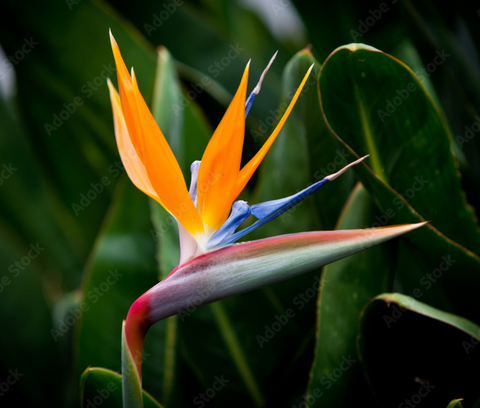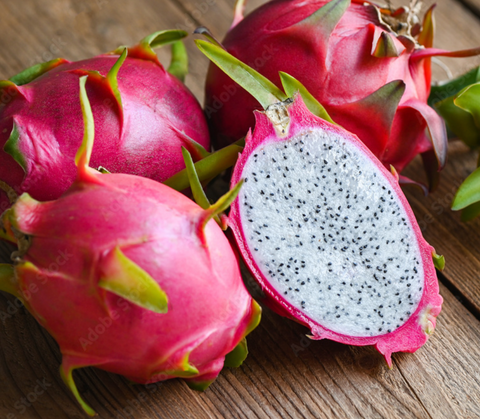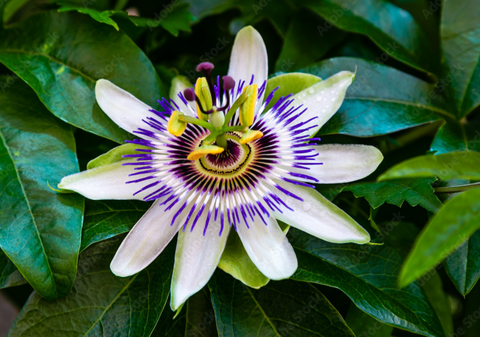Strelitzia is one of the most recognizable and exotic houseplants, and has been gaining popularity among plant lovers around the world in recent years. Its unique shape, large, lush leaves, and spectacular flowers make it one of the most prized plants for both indoor and outdoor cultivation. In this article, we will explore why Strelitzia is such a special plant, and how to properly grow, water, and care for it so that it thrives and beautifies your home or garden.
🌿 Origin and characteristics of strelitzia
Strelitzia is native to South Africa, where it grows in subtropical climates. It was named after the British Queen Charlotte von Mecklenburg-Strelitz, wife of King George III, for her regal beauty. The most famous species are Strelitzia reginae, known for its beautiful orange-blue flowers, and Strelitzia nicolai, known for its imposing size and white bird-like flowers.
One of the key characteristics of the Strelitzia is its flower, which resembles the head of a tropical bird, which is why the plant has been nicknamed "bird of paradise." This flower symbolizes exoticism, elegance, and beauty, making it a popular choice in both floristry and landscaping.
🌿 Growing strelitzia
Growing strelitzia requires certain conditions, which are, however, easy to provide in a home environment. The plant thrives best in tropical and subtropical climates, but it can also be successfully grown as a houseplant in areas with a temperate climate.
🌿 Light
Strelitzia needs a lot of light to grow and bloom successfully. It is best to place it in a place with plenty of indirect sunlight. Although it can tolerate some direct sunlight, it is better to protect it from too strong sunlight during the hottest part of the day to prevent damage to the leaves. If you are growing Strelitzia indoors, the ideal location is near an east or west window, where it will receive enough light without excessive exposure to direct sunlight.
🌿 Temperature
As a plant originating from subtropical regions, strelitzia thrives best at temperatures between 18 and 24 degrees Celsius. Although it can tolerate slightly lower temperatures, it is important to ensure that the temperature does not drop below 10 degrees Celsius, as this can significantly damage the plant. It is recommended to place strelitzia outdoors in the summer, on a sunny terrace or balcony, but it should be brought back indoors in time before the colder days arrive.
🌿 Soil
Strelitzia thrives best in loose, well-drained soil. It is recommended to use a potting mix, which you can improve by adding perlite or coarse sand to ensure optimal drainage. Poorly drained soils can cause water retention and root rot, which is one of the most common problems when growing Strelitzia.
🌿 Watering strelitzia
Watering Strelitzia is an important factor that affects its growth and health. Proper watering includes both the amount and frequency of watering, which vary depending on the season.
🌿 In the summer
In the warmer months, when Strelitzia is actively growing, its need for water is greater. The soil should always be slightly moist, but not too wet. It is recommended to water when the top layer of soil dries out, making sure that water does not remain in the pot tray, as this can cause root rot.
🌿 In winter
During the winter months, when the plant enters a dormant period, its water needs are reduced. During this period, watering should be reduced, with the soil allowed to dry slightly between waterings. Overwatering in winter is one of the main causes of Strelitzia's decline, so it's important to be careful with the amount of water you add.
🌿 Humidity
Strelitzia is not particularly demanding when it comes to humidity, but it will do better if the humidity is a little higher, especially in winter, when indoor heating can cause dry air. If the humidity in the room is too low, you can mist the leaves with water occasionally or place a container of water near the plant, which will help maintain more humidity.
🌿 Growing and caring for strelitzia
Strelitzia is a plant that, with proper care, can grow into an imposing and luxurious plant that will beautify any space. However, in order to achieve such growth, it is necessary to pay attention to several key factors.
🌿 Fertilization
It is recommended to fertilize Strelitzia during its growing season, i.e. in spring and summer. Use a balanced liquid fertilizer for houseplants, which you add to the watering water once every two to four weeks. Over-fertilizing can cause root damage and slow growth, so always follow the recommended dosage on the fertilizer package.
🌿 Pruning
Pruning Strelitzia is not strictly necessary, but you can occasionally remove wilted or damaged leaves to encourage new growth and keep the plant beautiful and healthy. If the plant gets too large, you can prune it to limit its size and shape.
🌿 Transplanting
It is recommended to repot Strelitzia every two to three years, when the roots outgrow the pot. The best time to repot is in the spring, when the plant begins to actively grow again. When repotting, choose a pot that is one size larger than the previous one and use fresh soil to ensure optimal conditions for further growth.
🌿 Reproduction
Strelitzia can be propagated by seed or by dividing the roots. Propagating by seed is a time-consuming process, as it can take several years before the young plants start to flower. A more popular method is by dividing the roots, which you can do during transplanting. Simply separate the side shoots with a portion of the root and plant them in separate pots.
🌿 Common problems when growing strelitzia
Although it is a hardy plant, strelitzia can face some problems that can affect its health and appearance.
🌿 Brown leaf edges
Brown edges on leaves are often a sign of overwatering or low humidity. If you notice brown edges, check to see if the plant is sitting in water and if the air in the room is humid enough. Otherwise, adjust your watering and increase the humidity.
🌿 Yellowing of leaves
Yellowing leaves can be a sign of overwatering or nutrient deficiency. Check the drainage and reduce watering if the soil is too wet. If watering is correct, consider adding fertilizer to provide the plant with the nutrients it needs.
🌿 Pests
Strelitzia is generally pest-resistant, but spider mites, aphids, or thrips may occasionally appear. If you notice pests, remove them with soapy water or an insecticide formulated for houseplants.
Strelitzia is more than just a plant; it is a symbol of exoticism and natural beauty that can enhance any space. Its presence in your home or garden will not only attract the attention of visitors, but will fill you with pride every time you watch it grow and bloom. Although its flowering requires patience, the satisfaction of seeing the first flowers appear is priceless.
With proper care and an understanding of its needs, Strelitzia can become a centerpiece of your interior design or garden space that will delight everyone around you. Whether you are an experienced gardener or a beginner, Strelitzia will bring you pleasure and pride with its lush beauty as you watch this beautiful plant thrive in your home or garden.



